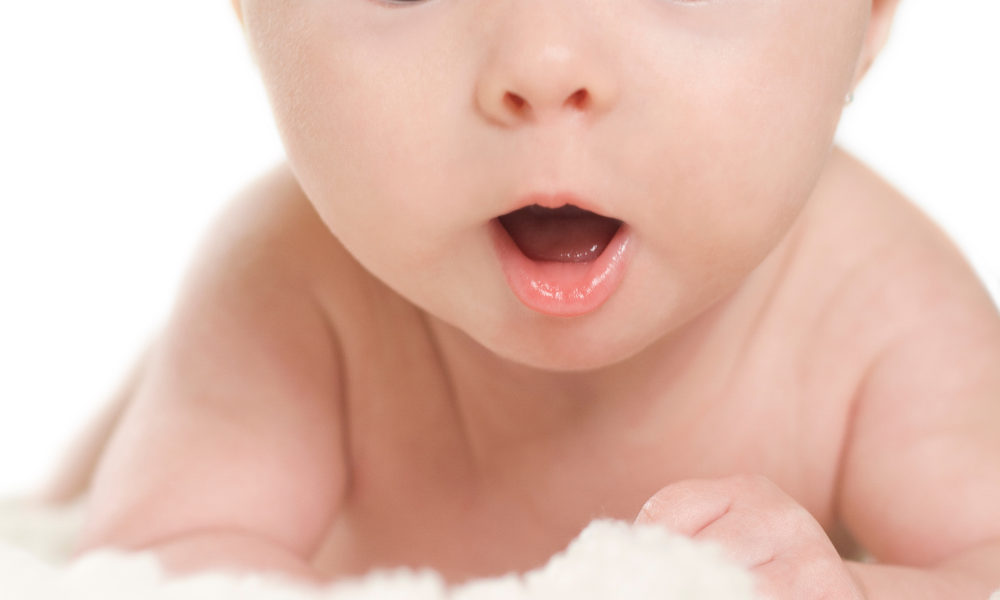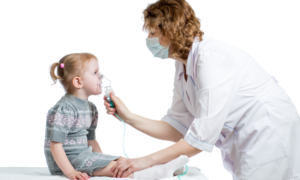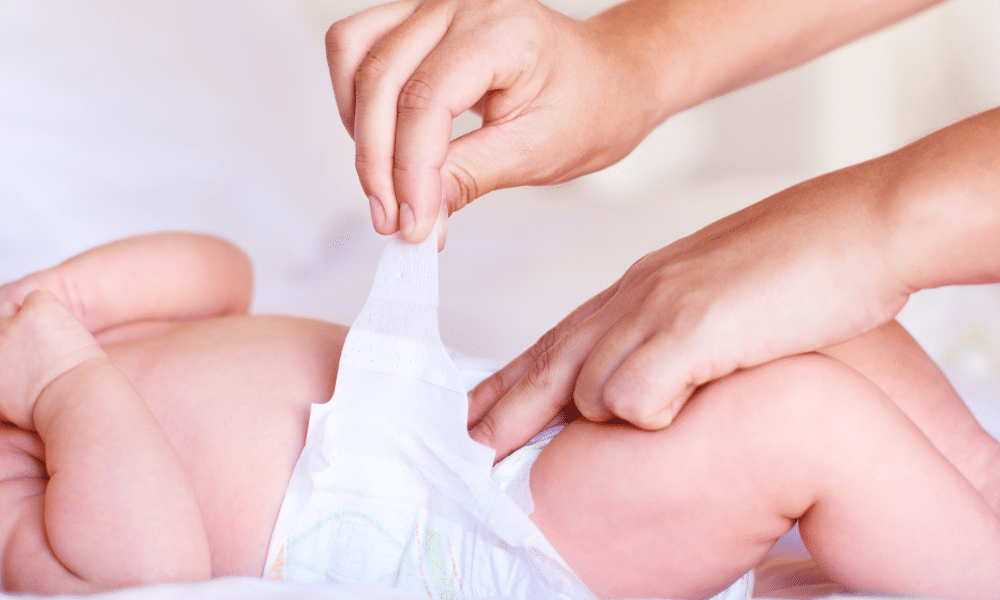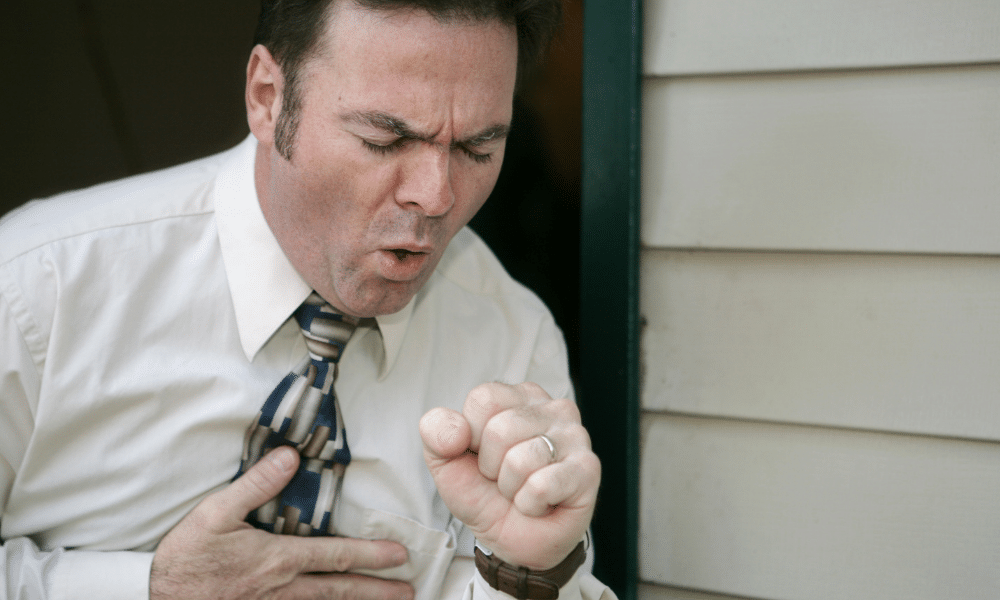Causes Why Baby Making Gasping Sounds but Breathing Fine
It is natural for new parents to get worried when their newborn is gasping for air. They might think that their child has some breathing issues but it is not what it looks like. There are several reasons why a baby has gaps when laid down. Just Don’t Panic! Instead, follow these tips when your baby is making gasping sounds but breathing fine.
Can You Shake Breast Milk? Myths About Breastmilk Storage & Handling
Is it normal for a baby to sometimes gasp for air?
This is one of the most asked questions by mothers when their baby starts making noises while breathing. Mothers try to get as much information about the newborns as they can, yet their little ones find a way to keep them on their toes. So when their baby starts gasping for air, this can be very alarming. The first question they ask themselves usually is, is something stuck in their throat? Should I take them to a doctor or is it normal?
Does it depend on what is going on with the baby? Sometimes the gasping is for a time being and goes away after some time. When this happens, it’s because they were likely not getting enough oxygen. You’ll observe this at times when your baby makes gasping sounds but breathing fine especially when they try to inhale the air at the same time.
Other times this might not be the case. There could be something stuck in their throat, especially if they are hyper and try to grab everything. They might have put something in their mouth. And other times still, it could be a medical condition.
Let’s take a look at several possible causes of baby making gasping sounds but breathing fine:
A baby’s lung is non-inflated and filled with several fluids. The baby breathes at a low pace, they take their first breath about ten seconds after birth, and this breath may sound like they are gasping for air. The following conditions may cause a baby to gasp for air while breathing.
Do Diapers Expire – Is It Safe To Use Old Diapers Detailed Answer
Laryngomalacia
Laryngomalacia is one of the most common causes of noisy breathing in babies. This happens when the tissue above the vocal cords is floppy and falls into the airway when a child breathes in and causes partial obstruction, which causes noisy breathing. In most cases, it gets better on its own as the baby grows. However, 15-20% of infants do require surgery. You should notice the breathing of your child as he or grows. It is pretty obvious by the time the baby is about 12 months old if he/she needs it or not. Most babies who have laryngomalacia start to show symptoms at or shortly after birth.
Some of the symptoms of Laryngomalacia are:
- Noisy breathing (stridor)
- Difficulty feeding
- Not gaining weight
- Gastro reflux (spitting, vomiting, and regurgitation)
- Choking while feeding
- Apnea (stopping breathing during sleep)
- An indentation in the neck and chest with each breath
Laryngomalacia Diagnosis
Your healthcare provider will have an examination and ask you about your baby’s overall health. After the regular checkup at birth or soon after the doctors often suspect laryngomalacia. To confirm the condition, a pediatric ear, nose, and throat (ENT) specialist conducts a procedure called flexible laryngoscopy or the primary test for laryngomalacia is a nasopharyngolaryngoscopy (NPL), in which the examiner uses a special camera to look down the throat to see the voice box (larynx) and vocal cords. This allows the dynamics of the voice box to be fully evaluated. Other tests such as neck or chest X-rays, micro laryngoscopy and bronchoscopy, airway fluoroscopy, or functional endoscopic evaluation of swallow (FEES) are sometimes done.
Tracheomalacia
The trachea (or windpipe) is a major part of the respiratory system; it carries air in and out of the body. It is supported by several rings of cartilage. Tracheomalacia in a newborn occurs when the cartilage in the windpipe, or trachea, has not developed properly. The walls of the windpipe might be weak, or it can happen because something is pressing on it. This condition causes noisy or difficult breathing in the first 1 to 2 months after birth. Children born with tracheomalacia may have other health issues like a heart defect, reflux, or developmental delay.
Symptoms of Tracheomalacia are:
- Noisy breathing that may get better when the baby’s position is changed
- Breathing gets worse during coughing, crying, feeding, or colds
- A high-pitched, harsh cough
- Rattling noise or wheezing with breathing
Tracheomalacia diagnosis
The first thing a doctor will do is perform a physical examination to confirm the symptoms. He will listen to the child’s breathing sounds and take a medical history. It can sometimes be seen with certain types of X-rays, including CT scans of the Chest or Airway Fluoroscopy. The diagnosis is confirmed with Direct Laryngoscopy/Bronchoscopy and/ or Flexible Bronchoscopy.
Bronchiolitis
It is a viral infection that affects small breathing tubes in the lungs called bronchioles. The infection causes excess mucus secretion and inflammation of the respiratory tissues, making it difficult for the baby to breathe properly.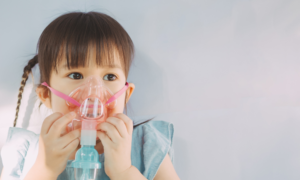
Symptoms of Bronchiolitis
- Runny nose
- Stuffy nose
- Cough
- Slight fever
- fast breathing
Bronchiolitis Diagnosis
It doesn’t require tests and X-rays to diagnose bronchiolitis. The doctors listen to the breathing sound of the lungs with a stethoscope and check oxygen levels with a pulse oximeter. If the condition of the child is getting worse or if another problem is suspected, your doctor may order tests, including Chest X-ray, mucus sample testing, and blood test to check white blood cell count.
Acid Reflux
Gastroesophageal Acid Reflux (GERD) is a common condition in newborns and children under the age of 2. In this condition, the stomach contents come back up into the esophagus, which can cause vomiting and spit up. It happens when the lower esophageal sphincter (LES) is underdeveloped, which acts as a barrier between the esophagus and the airway. Due to underdeveloped LES, the sphincter does not fully close or relax too often, hence there is a backflow of acid esophageal contents into the airway that causes the baby to gasp for air.
Acid Reflux signs and symptoms:
- Constantly spits up (projectile vomiting)
- Coughing or hiccupping when feeding
- Unsettled during feeding
- Refusal to eat
- Swallowing or gulping after burping or feeding
- Isn’t gaining weight
- Spits up blood or material that looks like coffee grounds
- Begins spitting up at age 6 months or older
Acid Reflux Diagnosis
If the baby is gaining weight, is healthy, and seems content, then testing usually isn’t needed. The medical history is enough for the doctor to diagnose it especially if it occurs regularly and causes discomfort to the child. With the help of diet and growth charts, the disease can be cured, however, the doctor still might want to conduct some tests on the newborn such as Barium Swallow, pH probe, Upper GI endoscopy, and gastric emptying study.
Asthma
Among many other reasons, unfortunately, asthma could be one of the reasons your baby is gasping for air. Asthma isn’t observed in older children; almost 70% of children diagnosed with asthma are under the age of five. It is a common chronic lung disease in which the bronchial tubes which bring air into and out of your lungs are inflated. In newborns and toddlers, it is difficult to identify the signs and symptoms of asthma because it is not easy to measure lung function. The symptoms vary from one baby to another but the common symptom is that they experience difficulty in breathing.
Other symptoms include:
- Wheezing or a whistling sound when breathing
- Fast, shallow breathing
- Coughing
- Fussiness and tiring easily
- Problems eating
- Blue tint to skin and fingernails
Asthma Diagnosis in Infants
It is difficult to diagnose asthma in newborns because it is not easy to measure lung function. After all, tests can’t be run on newborns. The infant can’t speak so they can’t tell the symptoms. Therefore, the exam is done when the baby has symptoms, such as wheezing or coughing. A mother needs to keep an eye on the changes in response to activity or rest, or during different times of the day. Tell the doctor about any family members that have asthma or allergies.
Respiratory Distress Syndrome (RDS)
Respiratory Distress Syndrome occurs in premature babies whose lungs are not fully developed. The duration of time determines the level of severity of the disease. The earlier a baby is born there is more chance for them to have RDS and need extra oxygen and help to breathe. The premature baby’s lungs are not fully developed, thus they have little surfactant. Surfactant is a liquid made in the lungs that coats the tiny air sacs in the lungs and helps keep them from collapsing. The air sacs must be open to allow oxygen to enter the blood from the lungs and carbon dioxide to be released from the blood into the lungs.
Babies who have RDS may show these signs:
- Rapid breathing after birth
- Change in color (discoloration) of lips, fingers, and toes
- Nasal flaring
- Chest retractions – skin over the breastbone and ribs pulls in during breathing
- Grunting sound when breathing
Respiratory Distress Syndrome (RDS) Diagnosis
Although Respiratory Distress Syndrome is common amongst premature babies the doctors still need to run some tests to rule out other types of newborn breathing conditions your child might have. The health care examiner will conduct a physical examination to check the condition and will ask for some tests, such as chest X-rays, echocardiogram, and Blood tests.
Sleep Apnea
Obstructive sleep apnea causes breathing to stop for a period and the baby makes gasping sounds but breathes fine while sleeping. It is most common in adults but also affects children, infants, and newborns. Babies with low birth weight and those born prematurely are affected by the disorder. It occurs in 50% of infants born between 33 to 35 weeks of gestation and is rare in full-term infants.
In this state, the muscles in the upper airway tend to relax, partially or completely blocking the airway while a child sleeps. The baby can’t get enough air, which can lower the oxygen level in the blood. This gives signals to the brain, and the baby briefly roused from sleep so that they can reopen the airway. Sleep apnea can prevent newborns and infants from getting the necessary amount of quality sleep they need to thrive. If it is left untreated it can result in long-term health complications.
Signs and symptoms include:
- Snoring
- Pauses while breathing
- Interrupted sleep
- Recurrent respiratory infections
- Mouth breathing
- Bedwetting (sleep terror)
- Difficulty swallowing
Sleep Apnea Diagnosis
To diagnose pediatric sleep apnea, the doctor will have a physical examination and look at the medical history of the child and ask you about the sleep pattern of your baby. He will examine the neck, mouth and tongue, and adenoid of your child and will order several tests to diagnose the condition. The tests may include Polysomnogram, Oximetry, and Electrocardiogram.
What do you do when a baby is gasping for air?
It is essential to keep the home clean and air purifier for your baby to thrive. If you observe that your child is having shortness of breath or generally gasps while breathing, there are several things you can try at home to ease them.

Give your baby a warm bath, as it is comforting and soothes down mucus that is stuck in the nasal passage.
Take notes when your child gasps for air, you have to observe as these observations help doctors to identify the problem. Keep an eye on the time when it happens, how frequently it happens, are there any other symptoms that are occurring with the gasping.
Change the position of the baby when he is sleeping if he gasps or feels uneasy when sleeping. Hold the baby in your arms with his head up and at an angle so he’s not fully on his back this will help the mucus to not block the air passages.
In Conclusion
Seeing babies gasping for air is always a cause for alarm, even if it ends up being something harmless. The condition should be left untreated as it can grow and lead to some severe and potentially fatal complications. Just make sure that you regularly check your little ones’ breathing patterns and see a doctor if the condition is persistent.
Is It Safe Dying Hair While Breastfeeding Or During Pregnancy?
